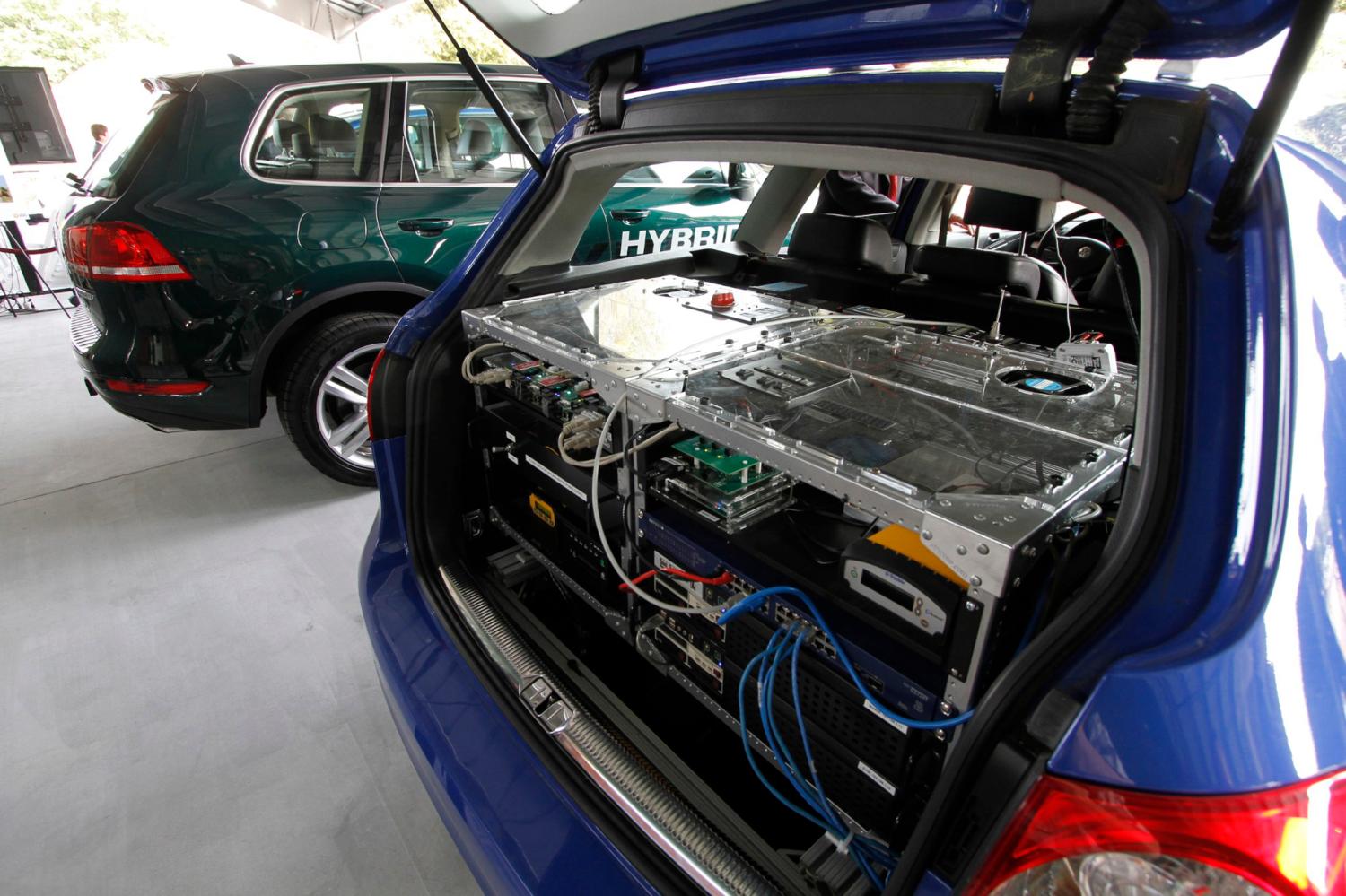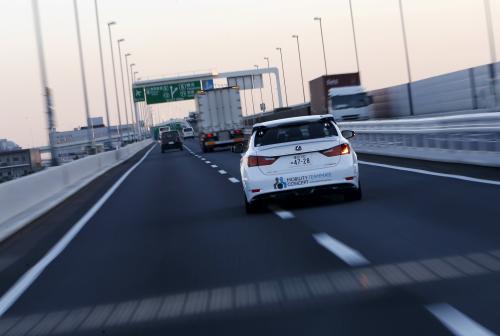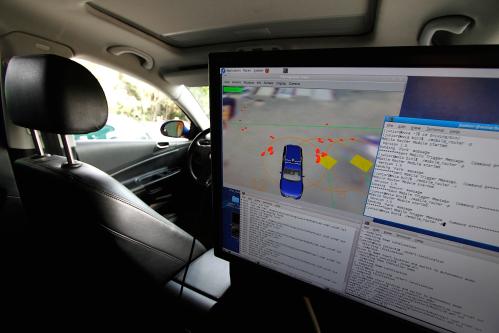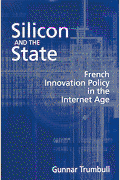While the government is looking to mandate private sector auto technology – vehicle-to-vehicle (v2v) communication – it is doing little to allow technology that would improve the nation’s public highways, according to a new paper by Clifford Winston, Searle Freedom Trust Fellow at Brookings and Fred Mannering at Purdue University published in The Economics of Transportation.
Winston and Mannering compare the nation’s highways to a blocked artery of the U.S. economy, noting that the indispensable road system is valued at $3 trillion, with 75 percent of goods transported on roads by truck and 93 percent of all commutes by cars and busses. The private-sector auto industry has implemented substantial technological improvement in terms of performance, safety and comfort, whereas technological improvements on highways have been meager, they write.
The authors list many beneficial policies that could be facilitated by existing technologies that the government could and should implement:
-
- Pricing (congestion pricing for car and truck lanes and for shoulders for cars; real-time pricing and information about on-street parking; pavement-wear and bridge-wear pricing for trucks)
-
- More flexible truck size and weight limits
-
- Investments (adjusting the number of traffic lanes in response to volume; new pavement designs to increase durability)
-
- Safety operations (variable speed limits; re-timing and optimizing traffic signals; using photo-enforcement technology; expediting response to incidents)
Those technologies have not been implemented, they posit, due to status-quo bias, agency imitations, regulatory constraints, political forces as well as lack of expertise; they note that the Federal Highway Administration spends only about 0.5 percent of its budget on promising research and development – or 10 times less than administrative spending.
Because policymakers have not implemented those existing technologies, the authors believe the driverless car will have to leapfrog ahead of the technology on government-run highways to improve highway performance. They note that the technology, with a 10 percent adoption rate, would reduce fatalities and injuries, save travel time and fuel – and save $40 billion annually. At a 50 percent adoption rate, it would save $200 billion per year. The promise of the cars will allow virtually all of the benefits of the above-listed technologies to come to fruition in spite of government foot-dragging.
“Our discussion of policymakers’ failure to implement this technology has culminated in the eternal debate over whether the public or the private sector is better able to spur technological change that contributes to growth,” they write. “In the case of highways, we conclude that it is likely that the private sector will eventually implement driverless car technologies, and that those technologies will benefit motorists by leap frogging the technological advance that the public sector has put on hold. If this innovation is not impeded by government regulations and does succeed, social welfare could possibly increase further by exploring privatization of the road system so that it could operate at the same level of technological sophistication as the vehicles that are driven on it.”
“Research has found that over the course of the day individuals’ commutes are the leading activity for which their dominant emotion is negative. Motorists would probably feel even worse if they were aware of the evidence summarized here—that policymakers could implement available technology on the road system that would reduce much of the congestion and delays that make road travel so onerous and would also improve safety,” they conclude.
The Brookings Institution is committed to quality, independence, and impact.
We are supported by a diverse array of funders. In line with our values and policies, each Brookings publication represents the sole views of its author(s).










